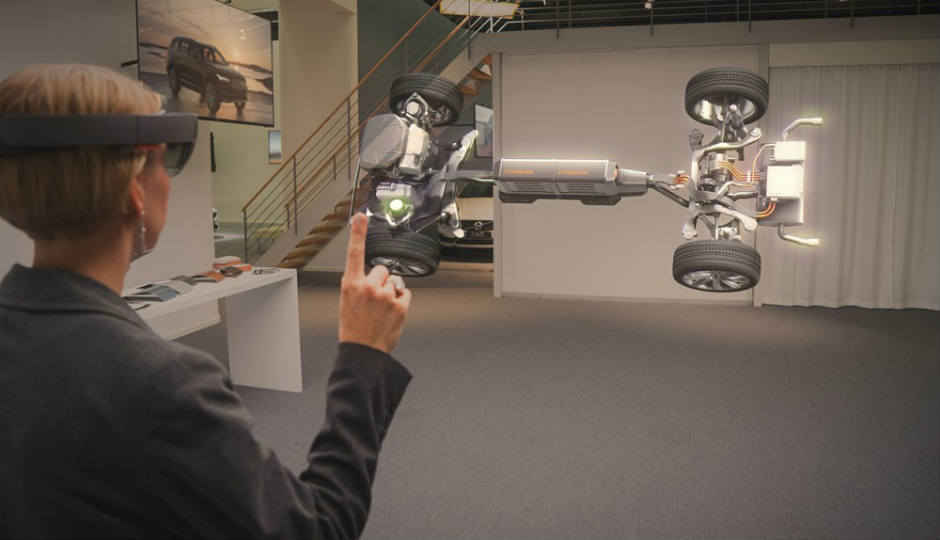Microsoft HoloLens and Volvo bring augmented reality to car showrooms

HoloLens will let buyers inspect each aspect of the car, like the engine or chassis, as a hologram and also customise the car before it is even manufactured
Microsoft has partnered with Volvo to bring augmented reality technology to showrooms, via HoloLens. The aim is to enhance the experience of buying a car by letting buyers inspect each aspect of the car in detail as a hologram. Buyers can open up the car completely and take a look at the engine, inspect the chassis or watch the drivetrain and transmission, while it is working. Buyers can also customise certain aspects of the car, like colour, interiors or rims, and see it in full scale, before it is manufactured. HoloLens can also be used to showcase certain features of the car, that a buyer may or may not be aware of, unless they read the manual.
Björn Annwall, Senior Vice President, Marketing Sales and Service at Volvo Cars said, “With HoloLens we have the freedom to create a bespoke experience which customers can steer themselves. Imagine using mixed reality to choose the type of car you want – to explore the colors, rims, or get a better understanding of the features, services and options available.”
Volvo isn’t the only company that will use HoloLens. In Microsoft’s official blog, the company says that it is working with other commercial partners like NASA JPL, Trimble, Case Western Reserve University and the Cleveland Clinic. It says that the device “enables innovative experiences that are impossible on any other device — or any other platform, and can transform the way companies work.”
Microsoft announced its HoloLens earlier this year during the BUILD conference. The device comes with its own CPU and GPU built into the headset, and is completely wireless. In its event in October, the company announced that it was inviting applications for HoloLens Development Edition. The device will start shipping from Q1 2016 for $3,000 (approx. Rs. 1,98,000).
Microsoft is not the only company working on augmented reality technology. Google Glass, which changed its name to Project Aura, may be working on two or three new wearable devices. One of these may be a glass-less, consumer grade headset, that is targeted at sports enthusiasts, and relies on music as its key functionality. Google may also be planning on expanding its wearable portfolio to enterprise users.




